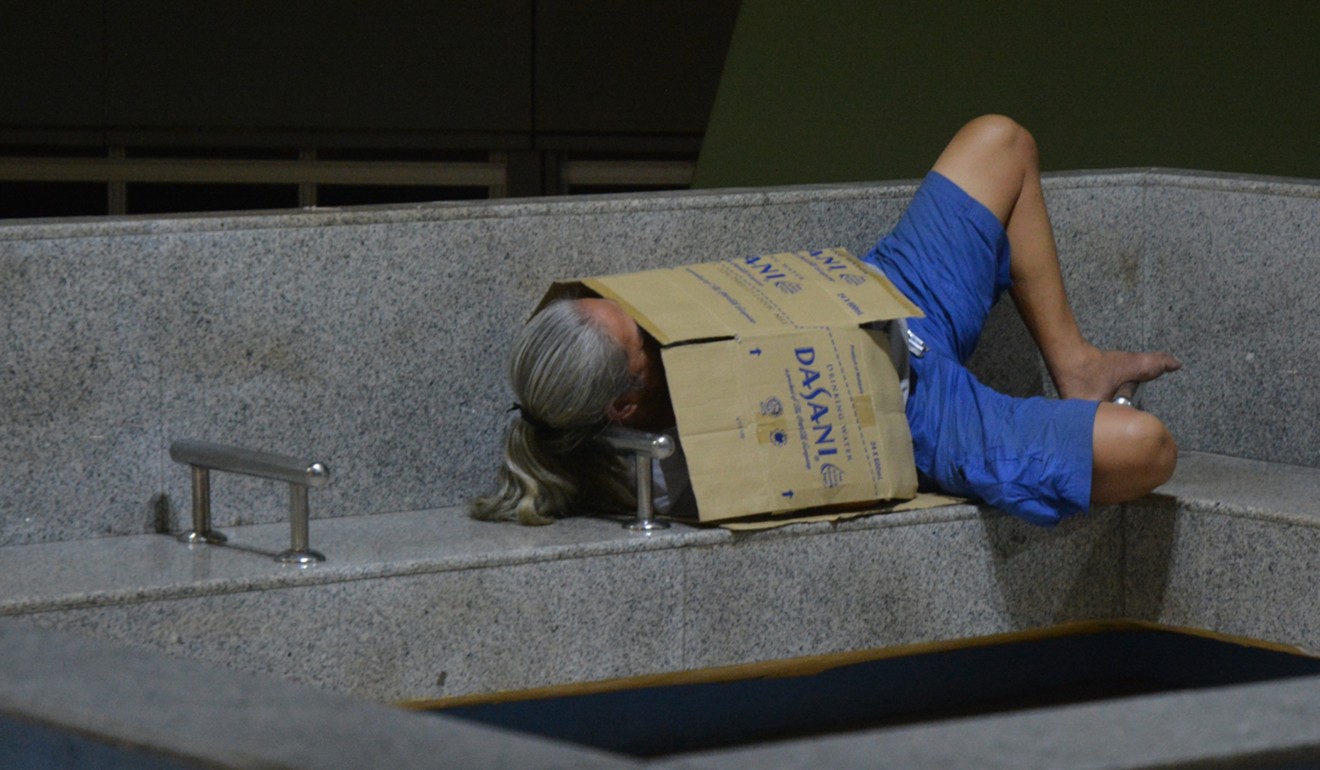
In wealthy Singapore, about 1,000 people sleep rough every night
- In the city where part of the Crazy Rich Asians movie was filmed and where the home ownership rate stands at more than 90 per cent, a forgotten few sleep outside
- Many actually have homes but are pushed out by family conflict, co-tenant quarrels, or a simple need to be close to work
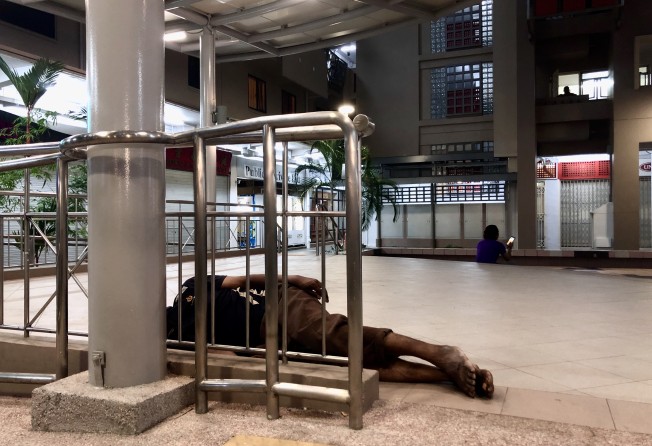
A landmark study on homelessness in Singapore has found that on any given night, between 921 and 1,050 people sleep in public spaces such as parks and unenclosed lobbies.
Most are older men who sleep rough because they cannot afford housing, want to be near their workplace or have issues with family members or housemates, among other reasons.
The study was led by assistant professor Ng Kok Hoe at the Lee Kuan Yew School of Public Policy, with the help of 480 volunteers, social workers mobilised by the government, and NGOs conducting fieldwork over three months.
Of the roughly 1,000 people found sleeping rough, 191 were awake and 88 agreed to be interviewed. Six in 10 of those 88 were employed, most commonly in cleaning, odd jobs, security and retail. Those who were paid monthly earned between S$560 (US$412) and S$3,000, with the monthly median income being S$1,400 – about 60 per cent less than the $3,467 of employed Singapore residents.
The findings, presented on Friday at a public seminar, are a follow-up to a smaller survey done two years ago, when 180 people were found sleeping in public across 25 locations in Singapore, where the home ownership rate is above 90 per cent.

This year’s survey divided the country of 5.7 million people into 25 districts consisting of 298 zones. The volunteers first spent at least one night in each zone over a three-month period to count the number of people sleeping outdoors or who looked like they were about to go to bed. In all, they found 1,050 homeless people.
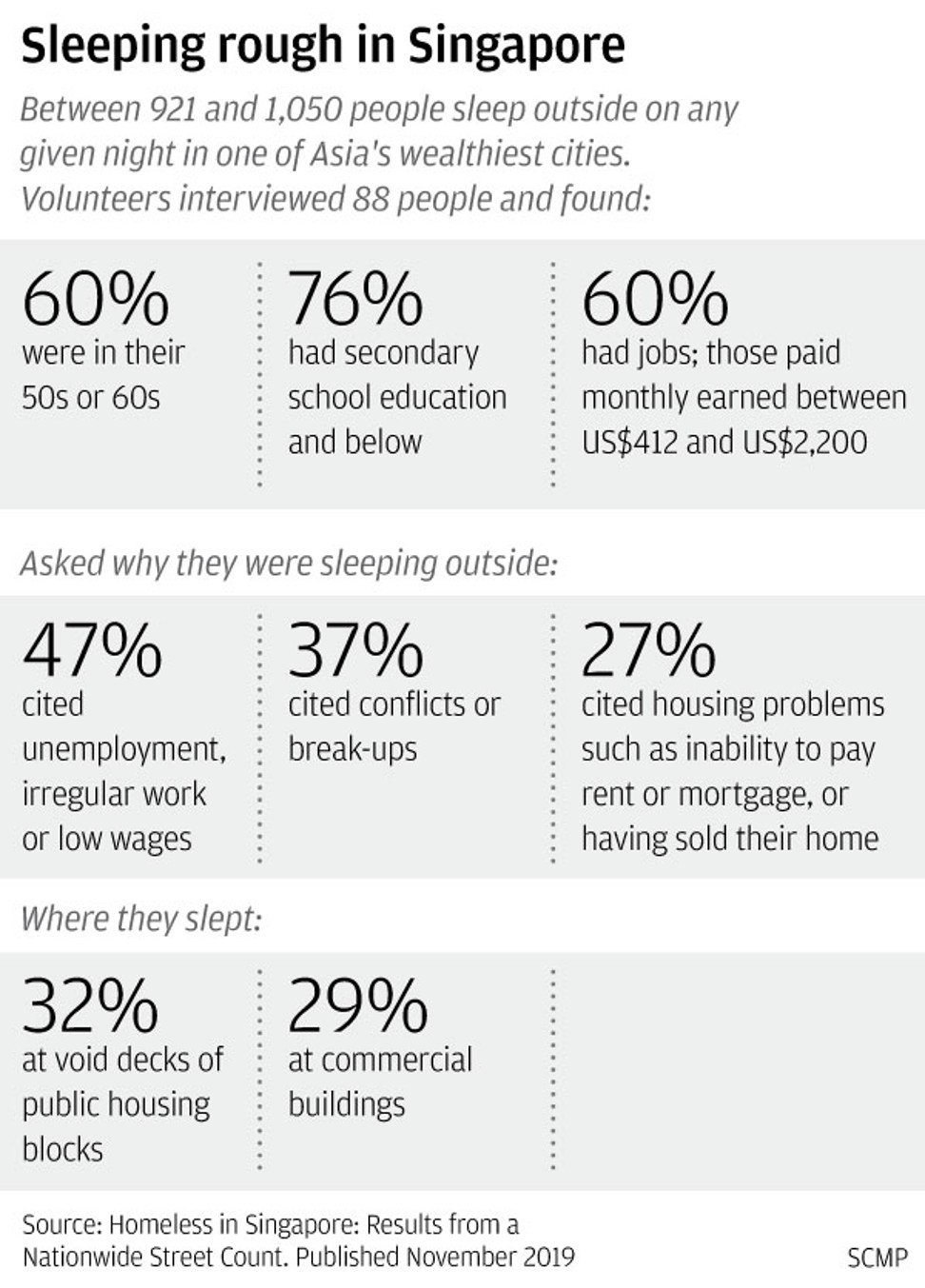
Second, fieldworkers visited selected sites – leaving out the zones with no homeless people found in the first count as well as roughly half of the zones where just one rough sleeper was recorded. Their visits were made in a single night during which they conducted another count and interviewed those still awake. There were 921 homeless people found in this one-night count.
Said Ng: “I was struck by how widespread homelessness is geographically, and how long it lasts for many homeless persons, despite them being in work.”
The assistant professor said the figures from the two counts were tightly correlated – the areas with higher numbers in the first count also had higher numbers in the second.
“That figures collected several months apart are related may reflect a stable geographical distribution of homelessness in Singapore,” he wrote in a paper on the findings.
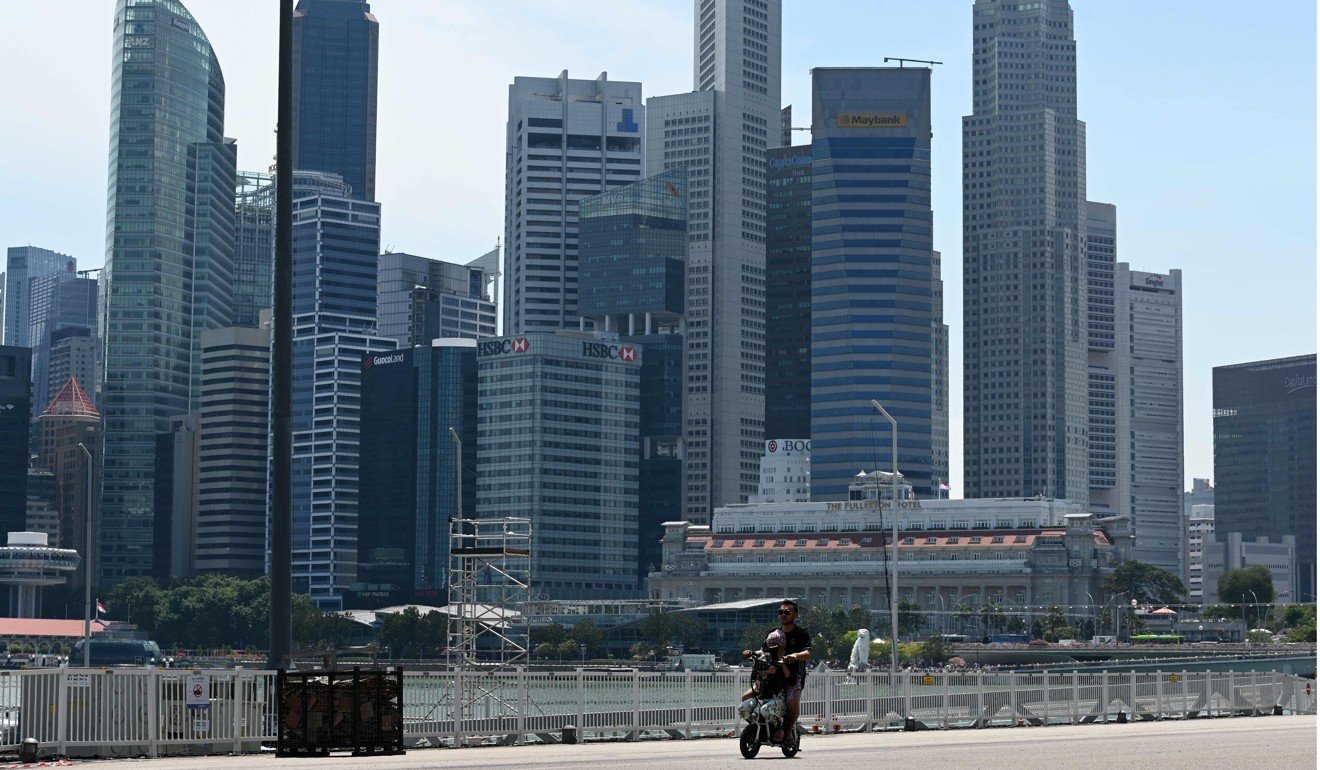
In response to the study, the Ministry of Social and Family Development said it appreciated the efforts of the community, researchers and volunteers.
“Homelessness is a complex issue that often involves multiple underlying social issues. Dr Ng’s study observed many different profiles: homeless people and rough sleepers who may have their own homes, Singapore residents and foreigners,” it said.
It added that over the last two years, the ministry had partnered with community groups and government agencies to reach out to this section of the population.
“Together, we engage and refer them to shelters and help agencies, such as social service offices and family service centres, to address their longer-term issues.”
During the single-night count where volunteers came across 921 homeless people, 191 were still awake and 88 agreed to be interviewed.
Among them, just under four in 10 had housing registered in their names, while a similar proportion said they could have stayed with family, friends or at their workplaces. But they chose to sleep outside because of family conflict, not wanting to inconvenience friends, problems getting along with co-tenants, or wanting to be near the workplace.
About half of the interviewees said they had been sleeping outside for between one and five years, with a third having done so for more than six. Just under two in 10 had been outside for less than a year.
More than half said they had encountered problems – including having their belongings stolen or being asked to move, while about half said they had only had two meals that day, with a quarter only eating one, or nothing at all.

Four in 10 said they had approached government social service offices in the neighbourhood or their member of parliament for help. Eight in 10 said they still maintained contact with friends and family.
The numbers are similar to those for Hong Kong, where official figures found 1,127 registered street sleepers in the 2017-18 financial year – an increase of 51 per cent from 2013-14 – but social workers thought the figure was closer to 2,000.
Ng’s paper suggested increasing the number of sites where homeless people can seek help and for shelter services to have more flexible rules.
Currently, government-funded transitional shelters and welfare homes come with rules on length of stay, as well as support from social workers and care and rehabilitation programmes.
Ng said one of the interviewees told researchers he was once placed in a welfare home for two or three weeks and “really didn’t like it”.
Harry Tan, a sociologist at the National University of Singapore who submitted a thesis on homelessness in the city state for his PhD at Australia’s Monash University, said many rough sleepers who entered welfare homes struggled with the loss of freedom it entailed.
“Once a person was admitted inside, it was difficult to leave the home compound unless it was for work purposes. For those who did not work, official permission must be sought and granted if they wanted to go out during the day,” Tan said. “The second challenge was the strict discipline in the welfare home.”
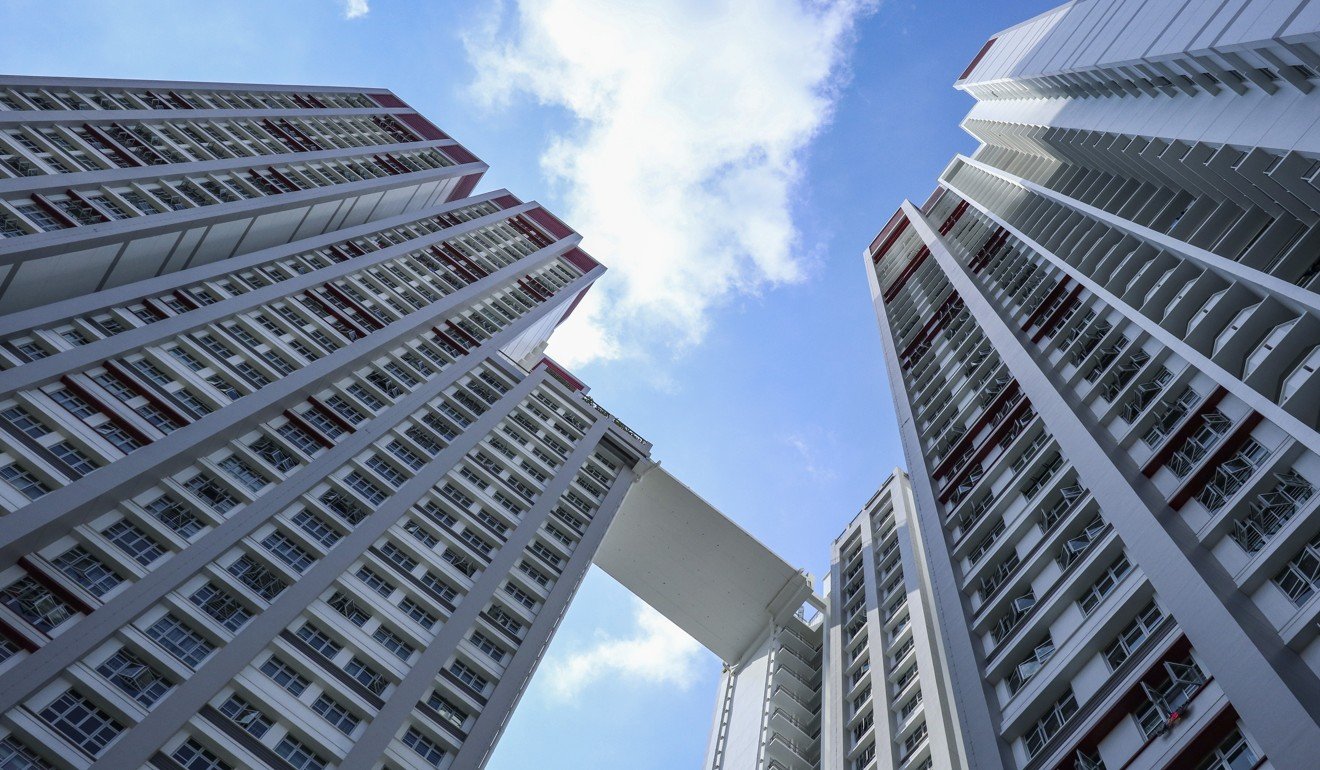
He also warned of the dangers of sleeping rough. “Just the other day one of them showed me this huge slit in the side of his bag where it was cut open and his belongings were stolen. And one woman woke up to a hot sensation on her chest only to find someone trying to burn her T-shirt. She thinks the person may have wanted to molest her.”
Ng suggested relaxing the rules for Singapore’s public housing rental scheme. Last year rental flats made up less than 6 per cent of the country’s more than 1 million public flats, and eligibility criteria for the heavily subsidised homes are strict. Applicants must form a family unit or pair up with another single applicant to secure a flat, which costs as little as S$26 a month for a studio unit for first-time applicants with a monthly income of S$800 or less.
At times, singles have found themselves sharing flats with a stranger which has given rise to quarrels, a problem the government has acknowledged.
“Removing the joint tenancy requirement as an immediate step will not only improve this exit path from homelessness, but will also help to realise basic standards of privacy for the poorest residents in the public housing sector,” Ng wrote, adding that low wages and job insecurity also needed to be addressed.
Ng praised the collaboration between members of the public, NGOs and the ministry in carrying out the count of the country’s homeless, saying it promoted “community ownership of the complex issue”.
“It will help challenge stereotypes about homeless people and create a safer environment for them,” he wrote.
One of the volunteers for the count was Brian Monteiro, who works at the Catholic Welfare Services Singapore – a charity which opens up its office in Waterloo Street to those without homes to shower and use the computers. He said it was heart-warming to see so many volunteers.
“I felt it was going to be a night that, hopefully, would see our people in the streets getting the respect and dignity that rightfully should be accorded to everybody,” he said.